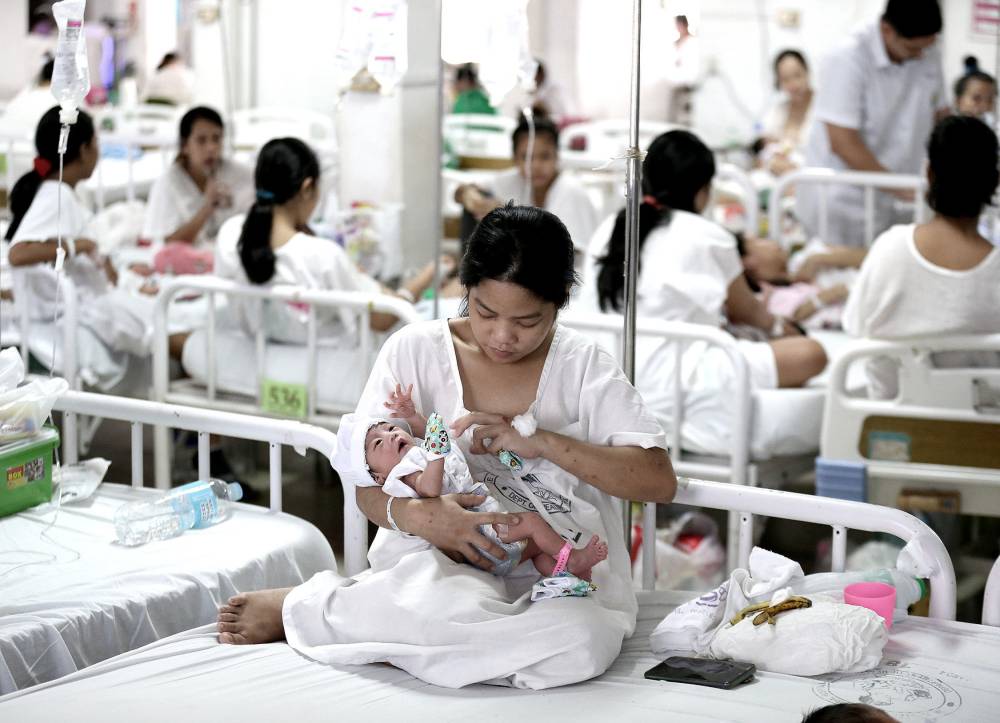UN report on women’s health finds PH ‘an inspiring case study’

Despite global gains in sexual and reproductive health and rights over the last 30 years, millions of women and girls—including those from the Philippines—have been deprived of access and opportunities, according to a United Nations report.
Based on the 2024 State of the World Population (SWOP) report released on Wednesday by the UN Population Fund (UNFPA), the United Nation’s sexual and reproductive health agency, women and girls who are poor, belong to ethnic, racial and indigenous minority groups, or are trapped in conflict settings, are more likely to die because they lack access to timely health care.
PH gains cited
“The Philippines serves as a complex, and in many ways, inspiring case study. We’ve seen significant advances in some areas, yet profound inequalities persist,” UNFPA Philippines country representative Dr. Leila Joudane said during the local launching of the report at the University of the Philippines in Quezon City.
“Access to contraception, reductions in maternal death and the continued fight for gender equality are successes to be honored. Yet we know the fight for sexual and reproductive health and rights is far from over, especially for marginalized communities, young people and those left furthest behind,” she noted.
According to the report, the Philippines has made significant progress when it comes to maternal and reproductive health since 1994, the year when the International Conference on Population and Development was established, with governments, including that of the Philippines, committing to placing sexual and reproductive health and rights at the core of sustainable development.
Antenatal care for women (care from health professionals during pregnancy) increased by 30 percentage points to 83 percent from 53 percent.
Unmet need for family planning—or the percentage of women of reproductive age who want to stop or delay bearing a child but are not using any method of contraception—was more than halved to 12 percent from 30 percent.
Maternal mortality (or the number of Filipina mothers who die from pregnancy-related causes while pregnant or within 42 days of pregnancy termination) also improved from 129 for every 100,000 live births back in 2000, to 78 per 100,000—but still lagging from the target of 70 per 100,000.
The UNFPA also recognized the Philippines for enacting laws, such as Republic Act No. 10354, or the Responsible Parenthood and Reproductive Health Act of 2012, despite pushback from some lawmakers and the Catholic Church, and Republic Act No. 11596, which prohibits child marriage.
Areas for improvement
The UN agency noted how the current laws in the country increased the access to family planning, especially among the poorest population, due to RA 10354.
“However, while the law improved access for economically disadvantaged women, it has also resulted in lower access to family planning among adolescents due to the need for parental consent,” it noted.
The Commission on Population Development (CPD) in February raised the alarm on the sharp increase of pregnancies among very young girls in the country and called on lawmakers to expedite the passage of the law to prevent teenage pregnancies.
Citing data from the Philippine Statistics Authority, the CPD noted that a total of 3,135 adolescent girls younger than 15 years old gave birth in 2022, surging by 35.13 percent from 2,320 recorded in 2021.
Health authorities consider child-rearing of mothers age 17 and younger a “high risk” because childbearing in this age group is more likely to have complications during pregnancy and labor that may result in higher numbers of unhealthy, or worse, dead mothers and children.
Empower women
The UNFPA also noted that the Philippines Sustainable Development Goal targets to reduce unmet need for family planning and gender-based violence by 2030 “may be missed.”
Health Secretary Teodoro Herbosa said his administration at the Department of Health is focusing on three important aspects to ensure Filipinos’ right to health: health promotion and disease prevention through primary care; urgent and acute care, and women’s health.
“If we take care of our women, it follows that children, spouses and even parents will also be well cared for. Let us give our people the best health that is their right,” he noted.
The 2024 SWOP report highlighted the importance of tailoring programs to the needs of communities—nstead of large-scale, one-size-fits-all approaches—and empowering women and girls to craft and implement innovative solutions.
It calculated that if world governments spent an additional $79 billion in low- and middle-income countries by 2030, this could avert 400 million unplanned pregnancies, save a million lives and generate $660 billion in economic benefits.
For the Philippines, an investment case developed by the UNFPA with Melbourned-based Burnet Institute showed that for every $1 investment in maternal health and family planning interventions by the government, there is an $18 return in national economic benefits for the country.
The UNFPA recommended a $483-million “intervention package” for the Philippines from 2023 to 2030—$299 million for family planning, $137 million for delivery care and $47 million for antenatal care—which will result in benefits totaling $8.7 billion by 2050.
“We know what we can change. We must tackle harmful stigmas around sex and sexuality, redouble our efforts for comprehensive, inclusive health care, and empower local actors to shape health systems from the ground up. Investments in sexual and reproductive health yield results,” Joudane said.
“It is very clear that by working together, we can advance toward a world of rights and choices for all. No exceptions. No exclusions,” she pointed out.




















